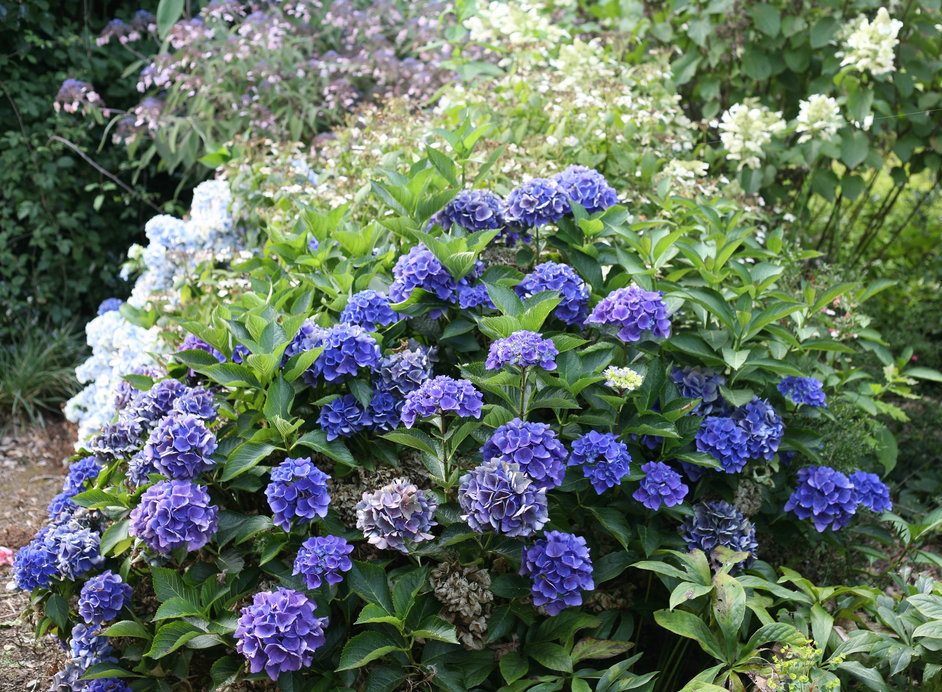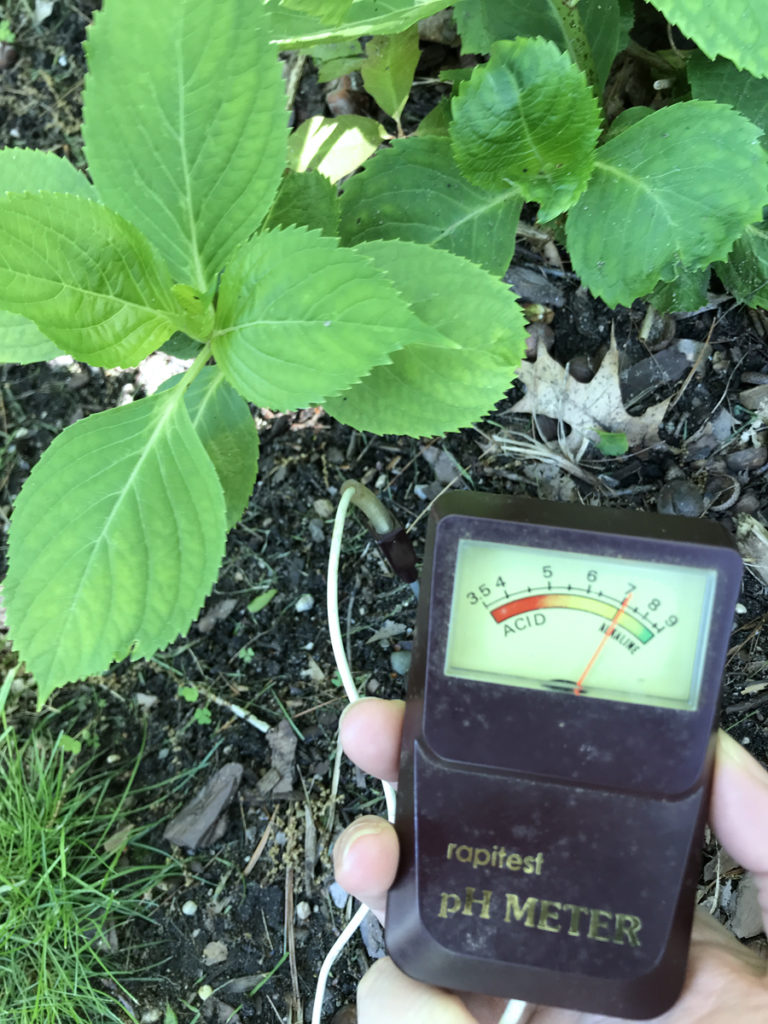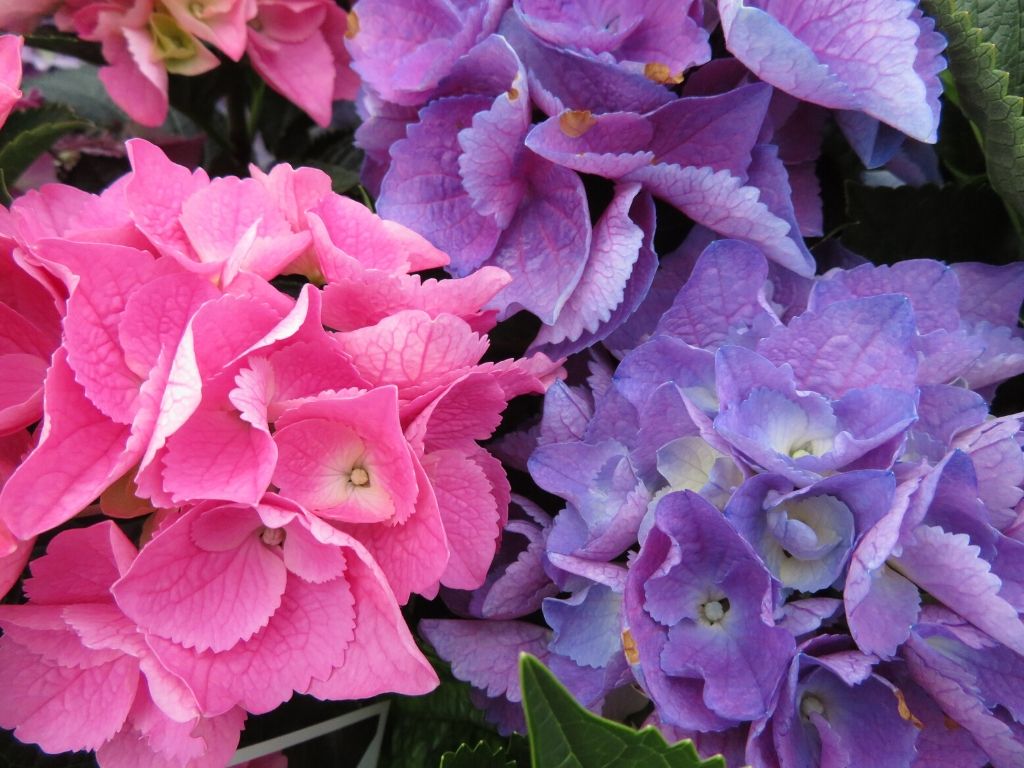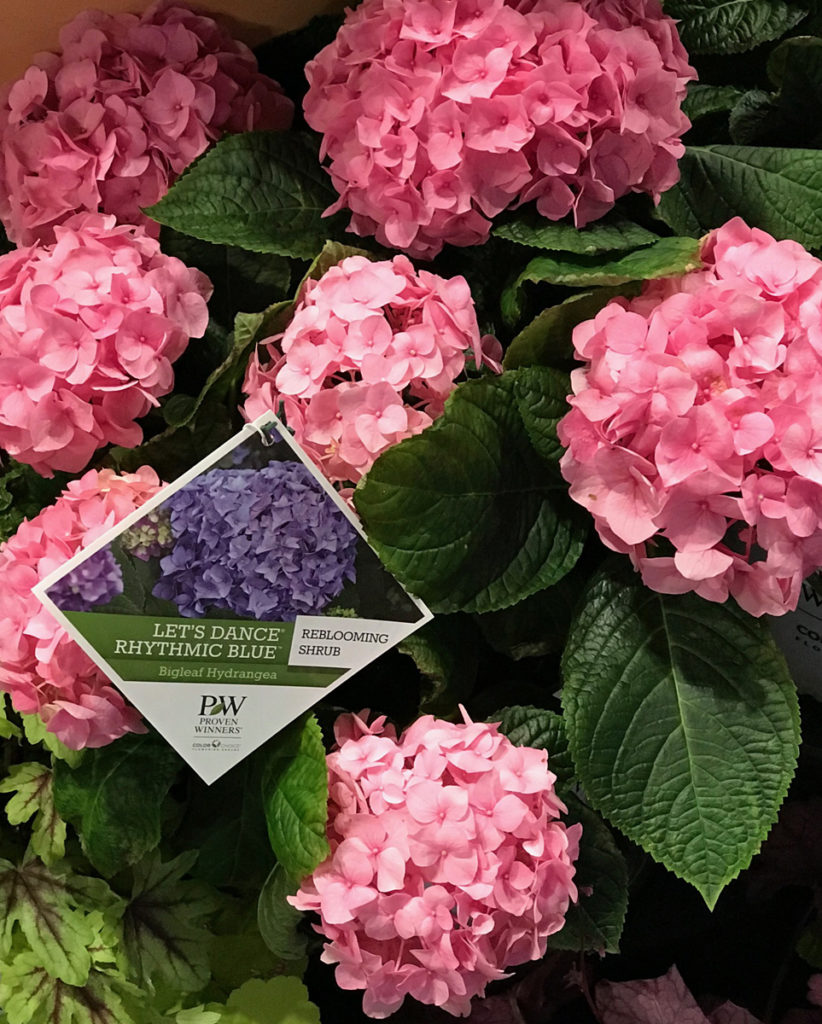
Do you long for the beautiful blue hydrangeas you’ve seen in pictures across the internet? It might just be possible.
Hydrangeas are unique from many other kinds of flowering shrubs in that some of them can change color because of the soil chemistry. There are several species of hydrangeas; it is the big leaf hydrangeas (Hydrangea macrophylla) and mountain hydrangeas (Hydrangea serrata) whose flowers can shift from pink to blue or somewhere in between based on the acidity of the soil. (Wondering what kind of hydrangea you have? Read the beginning of this article.)
Figuring Out Your Soil’s Acidity
If you drive through your town in summer and see blue hydrangeas everywhere, your native soil is likely acidic. When the soil’s pH (a measure of acidity) is less than 7 on a 14-point scale, hydrangea flowers tend to be blue. But if you drive through town and see mostly pink hydrangeas in everyone’s gardens, your soil is probably alkaline, meaning it has a pH greater than 7.

There is a more accurate way to measure the acidity of your soil. Pick up a simple soil pH meter like the one you see here at your local garden center or hardware store. It’s very easy to use–simply stick the probe down into the soil and wait a minute or two for the needle to stop moving. If it reads less than 7, you have acidic soil and if it’s above 7, you have alkaline soil. For bigleaf and mountain hydrangeas to have blue flowers, an ideal pH range is between 5.6-6.2.

The Shift from Pink to Blue
If you have alkaline soil and you’d like to turn your pink big leaf or mountain hydrangeas blue, you’ll need add an amendment called Turn Me Blue (available in our retail store) or aluminum sulphate to the soil. It’s a granular mineral that is very safe to use. Follow the package instructions to know how much you’ll need.
The color shift won’t happen overnight—it can take anywhere from a few months to an entire season for it to take effect. Have patience and don’t be tempted to give your hydrangea an extra dose to make it change faster. This will not speed up the process.
Keep in mind that if you add amendments to make your soil acidic this year, you’ll need to repeat it in subsequent years to keep the soil from turning back to its natural alkaline state. Many people who want to have blue hydrangeas find this simple task is a small price to pay for having such beautiful hydrangeas.
Most people don’t ask us how to turn blue hydrangea flowers pink, but if you’re wondering it’s the exact opposite process. When your soil is acidic and your hydrangeas are blue, you’ll need to shift the soil to be more alkaline to turn them pink. The mineral used to do that is garden lime—the same lime you likely put on your lawn to make it grow better if you have acidic soil. It is an inexpensive soil amendment that you’ll find at most garden centers and home improvement stores.
My hydrangea was blue when I planted it but now it is pink. What happened?
There are a few factors at work here. One is that the soil your hydrangea was grown in the container was acidic, so its flowers were blue. If you transplant it into your alkaline garden soil, the flower color will shift to pink over time as a result. You’ll need to add Turn Me Blue or aluminum sulphate to the soil to shift them back to blue.
Soil pH is also the explanation for when a hydrangea’s picture tag doesn’t match what you see in the pot. When the tag shows a blue flower but what you’re seeing is pink, it isn’t because the plant is misidentified. It is because the plant pictured on the label was grown in acidic conditions while the one in the container was grown more alkaline. When you plant it in acidic soil, the flowers will shift back to blue.
Many people don’t realize that water also has a pH. If your water supply is alkaline, over time it can influence the pH of your soil. While it is relatively easy to shift your soil to be more acidic, there really isn’t much you can do about adjusting your water’s pH. If this is the case for you, it may be time to accept your beautiful pink hydrangeas as they are.
Want to learn more about growing hydrangeas successfully? Check out this detailed article about hydrangea care we’ve prepared that answers all of the most commonly asked hydrangea questions.


1 thought on “How Can I Turn My Hydrangeas Blue?”
My Tuff Stuff hydrangeas have both pink, blue, and in-between flowers on different parts of the plant. I fertilize my nearby azaleas and rhododendrons in spring, so surmise that this reflects different pH readings in soil surrounding the roots.